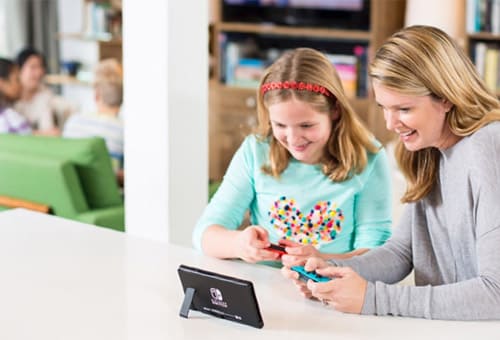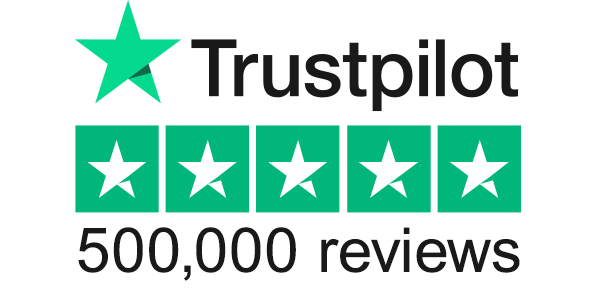Our site uses cookies to give you the best experience. or continue shopping if you're happy.
Accept & closeSetting Up Parental Controls on your Family Games Console
Do you know how to keep your kids safe while they play? We're sharing how to set up parental controls on your family games console.
Video games are a truly amazing medium. They can engross us in star-studded action movies, tell utterly captivating tales steeped in emotion, and give us a canvas to unleash our own inner creative genius.
From Minecraft to Call of Duty, there’s something for everyone, so it’s no surprise they’re more popular than ever. In fact, I’d be willing to bet you’ve got a games console tucked away somewhere in your own home, and if you’ve got children they’re probably as mad about games as the rest of the world.
But in the age of hyper-connectivity, how can you ensure your kids are only seeing content that’s suitable for them? Well, as luck would have it, it’s fairly easy. You see, most current generation consoles let parents lock away content that might be inappropriate and place restrictions on other apps like Netflix and Web Browsers.
It sounds straightforward, but you might be a bit concerned about tampering with those settings if you’re not tech savvy. Don’t worry though, because that’s why we’re here. So, without further ado, let’s take a look at the parental control features tucked away on the three most popular consoles on shelves right now: the PlayStation 4, Xbox One, and Nintendo Switch.
Playstation 4

Accessing the PlayStation 4’s parental control panel is relatively painless. From the system’s home screen, press up on the d-pad to get to the function area. From there, hit ‘settings,’ then ‘parental controls,’ and finally ‘restrict use of PS4 Features.’
At this point, you can choose to clamp down on the use of games, applications, downloaded movies, and physical media like Blu-ray discs. The way this works on the PS4 is simple: the console will ask you to choose a ‘parental control setting’ on a scale of 1 – 9.
As the picture shows, each number on that scale represents an age rating. So, if your child is 12 years old, you’d select level 5. Those same level ratings apply to movies as well.
Unfortunately, it’s not possible to set different parental control levels for different users. That means you should choose the level that best suits the youngest child in your home – unless your children are lucky enough to have a console each.
Once you’ve chosen the right level, you’ll be asked to set a four-digit passcode. That’ll stop your little angels changing the settings without your permission. For a full rundown of the PlayStation 4’s parental controls system, check out this in-depth FAQ on the Sony website.
Xbox One

You can access the Xbox One’s parental control settings from either xbox.com or an Xbox One console, but because you can only change the settings from the console itself, that’s what we’ll be focusing on.
Once you’ve fired up the console, you can find the parental controls by hitting the Xbox guide button (the glowing Xbox logo in the middle of the controller) and selecting ‘settings.’ After that, choose ‘all settings,’ then head to ‘account’.
From there, you should pick the ‘content restrictions’ option if you want to set content restrictions based on the recommended age. On the Xbox One you can restrict access to rated games, movies, TV shows, and even music, so it’s well worth a peek.
If you head back to the ‘family’ menu, you’ll also see an option called ‘privacy and online safety.’ If you choose that, you’ll be presented with two new choices: Xbox Live piracy and App privacy.
The first allows you to heavily customise the privileges and permissions for your Xbox Live account, while the latter gives you the ability to control what certain apps are allowed to do with your data.
For instance, if you hit ‘Xbox Live privacy’ you’ll be brought to a screen that lets you select from three default account settings. These will make the console age-appropriate for adults, teens, or children. But from there you can also play with a number of customisation options to take full control over how your child shares information, interacts with others and buys and downloads from the Xbox Live store.
There’s a huge array of options available here, and it’s well worth checking each one out to better understand the capabilities of the console and determine what features you consider to be family friendly.
Of course, this is just a brief overview of the system’s family safety features. For a more comprehensive rundown, take a trip to the official Xbox Support page.
Nintendo Switch

Given Nintendo’s family-friendly nature, it’s no surprise the Japanese giant has some of the most robust parental control features out there. While some parental controls are available on the system itself, by downloading the free Switch parental controls app [from the App Store or Google Play] you can give yourself a huge array of options.
For starters, the app allows you to set limits on how long or how late the Switch can be played.

When the time limit is reached, an alarm notification will pop up on screen, notifying the user and prompting them to put the system to sleep – though charitable parents can temporarily disable play time alarms and suspensions using their PIN.
Parents can also use the app to decide which games their children can play to lock away age-inappropriate content.

Through the app, you can choose from pre-set age categories or set custom options based on the age of your child to ensure your lovable ankle-biters can only play games of your choosing. The app is also useful if you want to keep tabs on how long your children have been playing, and what software they’ve been spending time with.
Beyond that, you can customise the online and social features for individual games or across the system as a whole. For instance, you could choose to limit the sharing of in-game media, or restrict the ability to post screenshots to social networks. And if you want to make sure nobody inadvertently dips into your wallet, you can also set restrictions on who can make Nintendo eShop purchases.
You can find out more about the Switch’s parental controls app over on the official Nintendo website.

